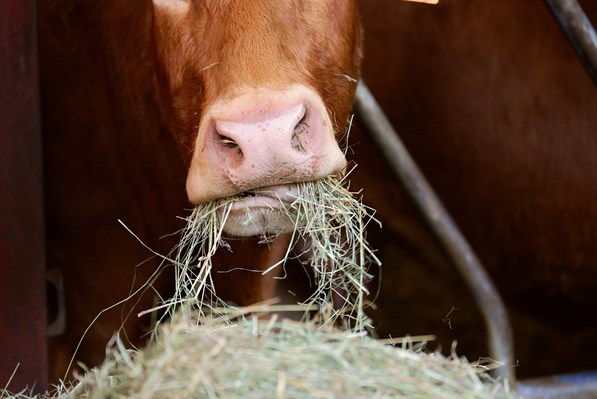Hypomagnesemia in housed cattle

Over the past few weeks since housing we have diagnosed and discussed several cases of hypomagnesemia in housed beef suckler cows. While usually associated with grazing, a diagnosis of low magnesium causing death or clinical signs should not be discounted in housed animals. A diagnosis of hypomagnesemia can be made by collecting ocular fluid (vitreous) from a dead animal or blood from the cohort. Levels of less than 0.55mmol/l and 0.8mmol/l in vitreous and blood respectively are diagnostic for hypomagnesemia.
It is noteworthy that in a recent study of 15 Scottish suckler herds over 30% of cows sampled one month prior to calving had low magnesium levels.
As a guide, rations should contain 20 to 25g of magnesium per cow per day; half coming from the forage component of the ration and the other half supplemented. If hay or straw is a significant component of the forage ration then this will supply less magnesium compared to grass silage.
Where the forage is likely to be high in potassium (two to three percent) the magnesium requirement rises to 30 to 40g per cow per day with more coming from the supplement. Where forage analysis is not available, silages that are likely to be high in potassium are those made from heavily fertilised or slurried ground and consequently may be cut earlier in the season.
If supplementing the ration with a high magnesium mineral, 100g of a mineral supplement containing 10% magnesium will provide 10g per day. Mineral supplements are typically between 10% and 20% Magnesium.
Where minerals are being supplemented it is essential to ensure all cattle have access to them; feed space (ideally 70cm per cow) allowing all cows to feed at the same time and mixing of diet are both areas to consider. Are younger, smaller, subordinate cows receiving the same ration as a bigger, older dominant cow?
Concurrent diseases that may reduce feed intake and absorption such as gastrointestinal parasites, Johne’s disease and pneumonia are also risk.
To monitor if the level of supplementation is correct, blood samples can be taken from a selection of the group four weeks after introducing the winter ration.
Please get in touch to discuss any unusual disease presentation you may come across.
Posted by SRUC Veterinary Services on 20/12/2023
